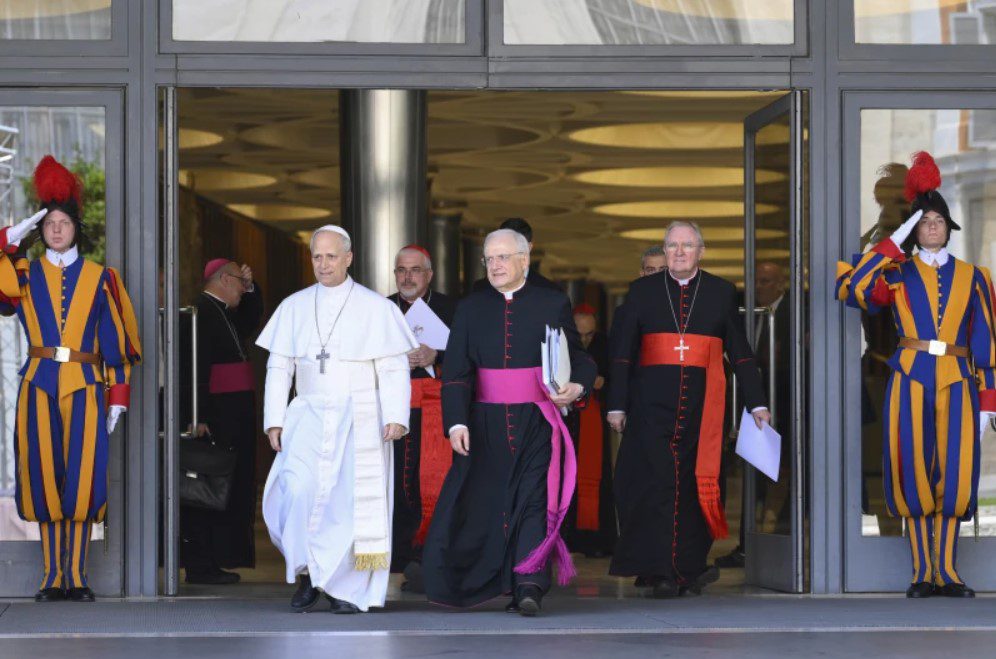When the white smoke rose over the Sistine Chapel, signalling the election of a new Pope, it was not just the ritual renewal of a sacred tradition — it was a symbolic tremor felt far beyond the cobbled streets of Vatican City.
In Robert Francis Prevost, now Pope Leo XIV, the Catholic Church has appointed a man whose passport may be American, but whose principles stand in stark contrast to the politics of Donald Trump.
In an era where White Nationalism, Christian Supremacism, and Anti-immigration Rhetoric are again surging through the west, the Vatican’s choice could hardly be more pointed. It is, quite unmistakably, a gesture of ideological divergence — perhaps even defiance.
Yes, the new Pope hails from the United States. But no, he is not the kind of American many in Trump-aligned Catholic circles had hoped for. During the Trump presidency, Prevost publicly opposed family separations at the US border, voiced concern for racial justice in the wake of George Floyd’s killing, and repeatedly affirmed the Church’s responsibility in confronting climate change.
Unsurprisingly, such views have made him a target among right-wing religious media in the US, who have labelled him ‘Woke’, ‘Marxist’, and even ‘Anti-Christian’.
For Catholic traditionalists — many of whom envisioned a return to a Eurocentric, conservative papacy — Prevost represents a crisis, not a coronation.
The past decade has seen a resurgence of white Christian nationalism in the United States — a movement that conflates religious authority with racial and national dominance. In this landscape, the image of a compassionate, socially conscious American pope stands as an ideological contradiction.
Rather than reinforcing white supremacy through ecclesiastical legitimacy, Leo XIV seems intent on dismantling its moral claims. His ascent signals a refusal to reduce Catholic identity to race, border, or political allegiance.
This is the Vatican’s ‘American moment’ — but not in the way many expected.
There is another dimension to this papal shift, one less remarked upon but equally significant: the waning grip of European clerical aristocracy over the Catholic leadership.
Historically, the papacy has been a preserve of Latin-speaking, Rome-educated European clergy. The election of an American pope — particularly one not beholden to conservative dogma — marks a quiet rupture in that lineage.
While the Church remains headquartered in Europe, its moral compass is increasingly tilting towards the Global South and the pluralist traditions of the Americas.
Prevost’s papacy, therefore, is not merely a break from Trumpism — it is a break from Eurocentrism.
Leo XIV’s election, however, poses a profound question: can the global Church finally free itself from the legacies of racial hierarchy and nationalist appropriation? Or will this moment be remembered as a flicker of reform, quickly extinguished by institutional inertia and internal dissent?
The answer is not yet clear.
But what is evident is this: in a world where religion is too often used to divide, the new Pope offers a counter-narrative grounded in inclusion, justice, and mercy.
Yes, the Vatican flag is now in American hands — but not in the hands of empire or exclusion.
In Pope Leo XIV, the Church may have found not a guardian of Western dominance, but a quiet reformer who dares to ask whether the Gospel still belongs to the margins.
In defiance of the noise, the posturing, and the fear, the bells of St Peter’s have rung not for power — but for possibility.


